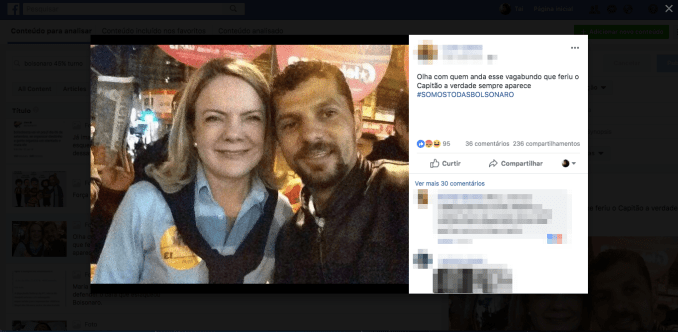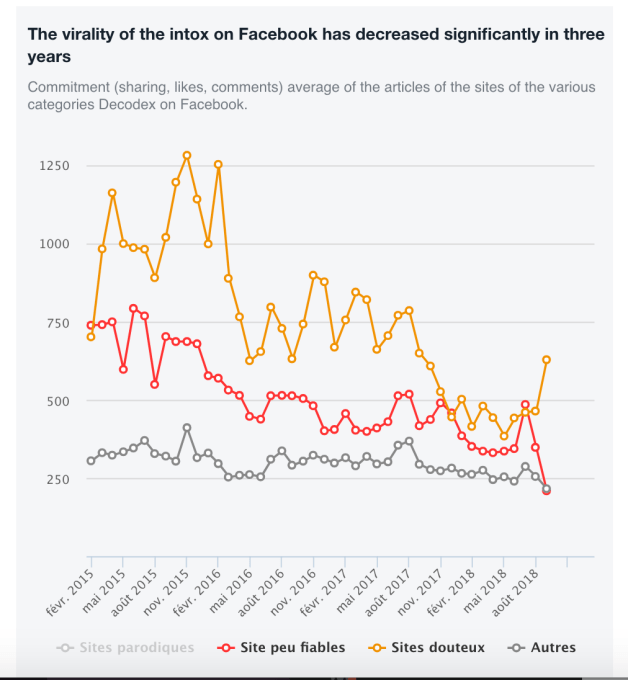Social Media
Facebook launches “Hunt For False News” debunk blog as fakery drops 50%

Facebook hopes detailing concrete examples of fake news it’s caught — or missed — could improve news literacy or at least prove it’s attacking the misinformation problem. Today Facebook launched “The Hunt For False News”, in which it examines viral B.S., relays the decisions of its third-party fact checkers, and explains how the story was tracked down. The first edition reveals cases where false captions were put on old videos, people were wrongfully identified as perpetrators of crimes, or real facts were massively exaggerated.
The blog’s launch comes after three recent studies showed the volume of misinformation on Facebook has dropped by half since the 2016 election, while Twitter’s volume hasn’t declined as drastically. Unfortunately, the remaining 50 percent still threatens elections, civil discourse, dissident safety, and political unity across the globe.![]()

In one of The Hunt’s first examples, it debunks that a man who posed for a photo with one of Brazil’s senators had stabbed the presidential candidate. Facebook explains that its machine learning models identified the photo, it was proven false by Brazilian fact-checker Aos Fatos, and Facebook now automatically detects and demotes uploads of the image. In a case where it missed the mark, a false story touting NASA would pay you $100,000 to study you staying in bed for 60 days “racked up millions of views on Facebook” before fact checkers found NASA had paid out $10,000 to $17,000 in limited instances for studies in the past.
While the educational “Hunt” series is useful, it merely cherry picks random false news stories from over a wide time period. What’s more urgent, and would be more useful, would be for Facebook to apply this method to currently circulating misinformation about the most important news stories. The New York Times’ Kevin Roose recently began using Facebook’s CrowdTangle tool to highlight the top 10 recent stories by engagement about topics like the Brett Kavanaugh hearings.
If Facebook wanted to be more transparent about its successes and failures around fake news, it’s publish lists of the false stories with the highest circulation each month and then apply the Hunt’s format more explaining how they were debunked. This could help to dispel myths in societies understanding that may be propagated by the mere abundance of fake news headlines, even if users don’t click through the read them.

The red line represents the decline of Facebook engagement with “unreliable or dubious” sites
But at least all of Facebook’s efforts around information security including doubling its security staff from 10,000 to 20,000 workers, fact checks, and using News Feed algorithm changes to demote suspicious content are paying off.
- A Stanford and NYU study found that Facebook likes, comments, shares, and reactions to links to 570 fake news sites dropped by over half since the 2016 election while engagements through Twitter continued to rise, “with the ratio of Facebook engagements to Twitter shares falling by approximately 60 percent.”
- A University Of Michigan study coined the metric “Iffy Quotient” to assess the how much content from certain fake news sites was distributed on Facebook and Twitter. When engagement was factored in, it found Facebook’s levels had dropped to early 2016 volume that’s now 50 percent les than Twitter.
- French newspaper Le Monde looked at engagement with 630 French websites across Facebook, Twitter, Pinterest and Reddit. Facebook engagement with sites dubbed “unreliable or dubious” has dropped by half since 2015.
Of course, given Twitter’s seeming paralysis on addressing misinformation and trolling, they’re not a great benchmark for Facebook to judge by. While it’s useful that Facebook is outlining ways to spot fake news, the public will have to internalize these strategies for society to make progress. That may be difficult when the truth has become incompatible with many peoples’ and politicians’ staunchly-held beliefs.
In the past, Facebook has surfaced fake news spotting tips atop the News Feed and bought full-page newspaper ads trying to disseminate them. The Hunt For Fake News would surely benefit from being embedded where the social network’s users look everyday instead of buried in its corporate blog.
-

 Entertainment7 days ago
Entertainment7 days agoWhat’s new to streaming this week? (Jan. 17, 2025)
-

 Entertainment6 days ago
Entertainment6 days agoExplainer: Age-verification bills for porn and social media
-

 Entertainment6 days ago
Entertainment6 days agoIf TikTok is banned in the U.S., this is what it will look like for everyone else
-

 Entertainment6 days ago
Entertainment6 days ago‘Night Call’ review: A bad day on the job makes for a superb action movie
-

 Entertainment6 days ago
Entertainment6 days agoHow ‘Grand Theft Hamlet’ evolved from lockdown escape to Shakespearean success
-

 Entertainment6 days ago
Entertainment6 days ago‘September 5’ review: a blinkered, noncommittal thriller about an Olympic hostage crisis
-

 Entertainment6 days ago
Entertainment6 days ago‘Back in Action’ review: Cameron Diaz and Jamie Foxx team up for Gen X action-comedy
-

 Entertainment6 days ago
Entertainment6 days ago‘One of Them Days’ review: Keke Palmer and SZA are friendship goals

















